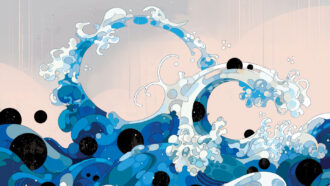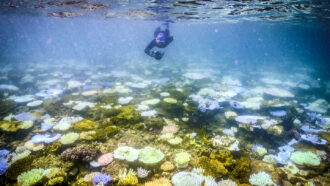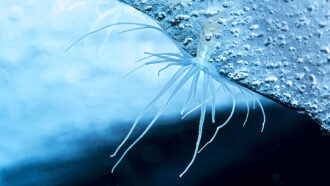News Detective: Learning to Surf
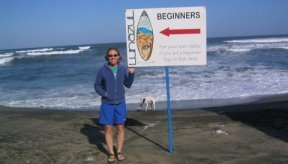
Whenever I’m near the ocean, I always feel as if I’m on vacation. I love the smell of salt in the air, the squawk of seagulls, and the sound of the waves as they lull me to sleep.
On a recent weeklong trip to Mexico, I learned to appreciate the ocean in a new way. As part of a camp for women run by a company called Las Olas, I spent up to 5 hours a day learning how to surf. I’ve always liked swimming and jumping through waves, but this was different.
The surf instructors at Las Olas, all women, are experienced, dedicated, and passionate about the sport. They travel the world looking for perfect waves. They compete in and win world championships. And their enthusiasm is contagious.
Ultimately, though, the best teacher of all is made of liquid.
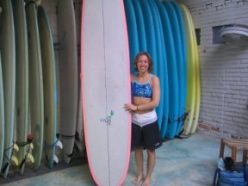 |
| Emily picks a surfboard. |
| Courtesy of E. Sohn |
The amazing thing about the ocean is that it’s always changing. Thanks to the pull of the moon and sun, constantly shifting winds, and offshore storms that come and go, no two waves are alike. Certain areas have predictably good waves, but you can never know exactly where you need to be, or how hard you need to paddle, until you get out there.
As a beginner, I found this both exciting and frustrating. During some sessions, I caught wave after glorious wave. I even managed to turn and maneuver my board into the edge of a wave’s breaking crest. Other days, most waves seemed to pass me by, even though I was paddling furiously. I also had some spectacular falls and spills. Ouch.
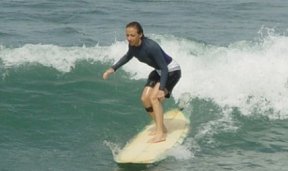 |
| Emily on board. |
| Courtesy of E. Sohn |
On the last day of the trip, I met Linda Benson. She started surfing when she was 11 years old. In the late 1950s, she became the first woman to surf the enormous waves at Waimea Bay on the North Shore of Oahu in Hawaii. She also performed stunts in some of the first surfing movies in the 1960s. At age 62, she still surfs!
“Surfing is an art,” Benson told me. “The board is the brush. The water is the palette. Everyone’s surfing style is different, like a fingerprint.”
The sea was particularly choppy on the day that I met Benson. Only two or three brave souls were out battling the waves. They were getting pounded.
I knew that I was out of my league, but talking to Benson had inspired me. What’s more, it was my last chance to surf before flying home to chilly Minnesota. So, I strapped my board’s leash around my ankle and paddled out.
After a few brief—very brief—rides, I managed to make the perfect drop-in. I glided down the face of a wave that was maybe 5 feet high. I felt the surge of joy that comes from walking on water and the pride of surfing in such tough conditions. I was flying!
Then, I hit a bump and lost my balance.
My board flipped as I fell, and my thigh landed on one of the fins. Then, a series of waves crashed over me and held me down. I felt myself twisting and rolling like a pebble. I hadn’t managed to get a good breath of air before taking the plunge, and I had no idea which way was up. They always tell you to relax when you’re under. I tried, but panic was creeping in.
Eventually, my head popped up. I gasped for air. I immediately hopped on my board and headed straight for shore.
That was it. My first surf trip was over, and I had a plane to catch. I flew home with a massive bruise as a souvenir, a newfound respect for the power of the ocean, and the determination to surf again.
A few months later, I still dream of surfing. The bruises have faded. But the obsession lives on.—Emily Sohn



